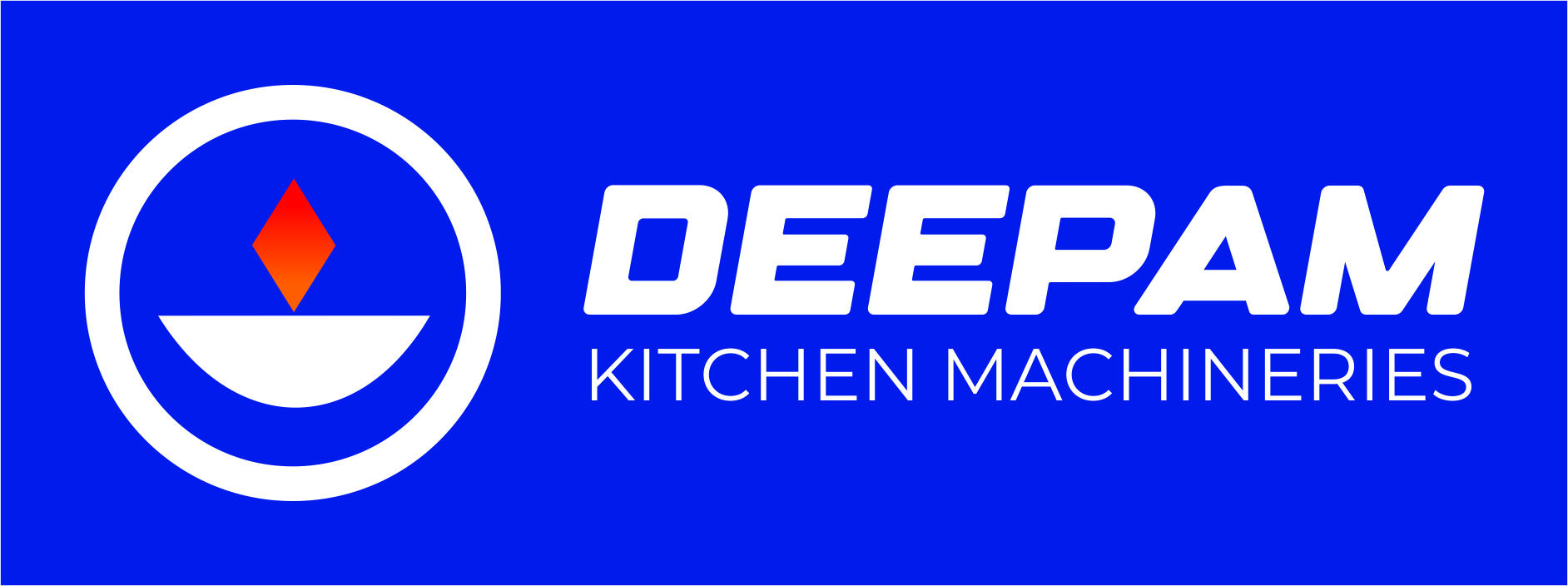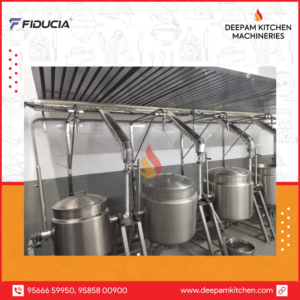Introducti0n to the Steam Jacketed Kettles Manufacture: Efficiency to its Best.
A steam jacketed kettle consists of a large, rounded pot with an outer shell or jacket. The space between the inner pot and the outer jacket is filled with steam, which heats the contents of the kettle indirectly. This method of heating ensures that the food does not come into direct contact with the heat source, significantly reducing the risk of burning and allowing for precise temperature control.
The kettles can be constructed from various materials, but stainless steel is the most common due to its durability, resistance to corrosion, and ease of cleaning. They come in different sizes and capacities, ranging from small countertop units to large floor-mounted models capable of holding hundreds of gallons.
Steam jacketed kettles can be operated manually or with advanced controls that allow for automation of cooking processes. They may also be equipped with features such as tilting mechanisms for easy pouring and cleaning, agitators for continuous stirring, and pressure controls for cooking under various conditions.
Let’s get into the Features of Steam Jaceted kettles.
Even Heat Distribution:
The steam jacket surrounds the entire pot, providing uniform heat to the contents. Eliminates hot spots, ensuring consistent cooking.
Rapid Heating and Cooking:
Steam transfers heat more efficiently than direct flame or electric elements. Speeds up the cooking process, enhancing productivity.
Temperature Control:
Precise control of steam pressure allows for accurate temperature settings. Suitable for delicate recipes that require exact cooking conditions.
Durable Construction:
Typically made from high-quality stainless steel. Resistant to corrosion and wear, ensuring long-term use.
Variety of Sizes and Capacities:
Available in various sizes to suit different production needs. Customizable options to fit specific kitchen layouts and requirements.
Safety Features:
Equipped with pressure relief valves and safety locks. Ensures safe operation under high-pressure conditions.
Ease of Use and Cleaning:
Tilting mechanisms for easy transfer of cooked food. Smooth surfaces and rounded edges prevent food from sticking and facilitate cleaning.
Optional Agitators:
Mechanical stirrers to prevent food from sticking and ensure even mixing. Essential for cooking large batches of soups, sauces, and stews.
Energy Efficiency:
Efficient use of steam reduces energy consumption. Lower operational costs compared to traditional cooking methods.
Benefits of Steam Jacketed kettles: Made your Commercial Kitchen Most beneficiery.
Improved Food Quality:
Even heat distribution ensures that food is cooked evenly and thoroughly. Reduces the risk of burning or undercooking.
Increased Efficiency:
Faster cooking times enhance kitchen productivity and throughput. Allows for the preparation of larger quantities in shorter periods.
Cost Savings:
Energy-efficient operation lowers utility bills. Durable construction reduces maintenance and replacement costs.
Versatility:
Suitable for a wide range of cooking applications, from boiling and simmering to braising and blanching. Can handle both liquid and solid foods.
Safety and Compliance:
Designed to meet strict safety standards, minimizing the risk of accidents. Pressure controls and safety features ensure safe operation.
Ease of Operation:
User-friendly controls and features make it accessible to operators of all skill levels. Automated options reduce the need for constant monitoring.
Hygiene and Cleanliness:
Stainless steel construction is easy to clean and sanitize. Reduces the risk of contamination and ensures compliance with health regulations.
Scalability:
Ideal for both small and large-scale food production. Flexible options allow for expansion as business needs grow.
Appilactions of Steam Jacketed Kettles:
Steam Jacketed Kettles find applications in a multitude of industries and sectors where precise temperature control and efficient cooking are paramount. Here are some examples of where these vessels shine:
Commercial Kitchens and Restaurants:
Preparing soups, stews, and sauces in large quantities. Cooking pasta, rice, and grains evenly and efficiently. Making stocks and broths with consistent quality.
Catering Services:
Preparing large batches of meals for events and gatherings. Ensuring food is cooked uniformly and kept at safe serving temperatures.
Institutional Kitchens:
Serving hospitals, schools, and correctional facilities where large volumes of food are needed. Preparing diverse menus with precise temperature control for dietary needs.
How to Use Steam Jacketed Kettles
Using a steam jacketed kettle effectively involves understanding its components, operating it safely, and maintaining it properly. Here’s a step-by-step guide on how to use these versatile cooking appliances:
Preparation:
Ensure the kettle is clean and all components are in good working condition. Check the steam supply and ensure it is connected and ready for use. Verify that safety valves and pressure relief mechanisms are functional.
Filling the Kettle:
Open the lid and add the ingredients into the inner pot. Do not overfill the kettle; leave enough space for stirring and boiling.
Starting the Steam Supply:
Open the steam valve to allow steam to enter the jacket. Adjust the temperature control to the desired setting. The steam pressure gauge will indicate the pressure inside the jacket. Wait for the kettle to reach the desired cooking temperature.
Cooking:
Monitor the temperature and pressure using the control panel. Stir the contents periodically to ensure even cooking. If the kettle has an agitator, turn it on for continuous stirring. Adjust the steam flow as needed to maintain consistent temperature.
Finishing the Cooking Process:
Once the food is cooked, turn off the steam supply by closing the steam valve. Allow the pressure to decrease and the kettle to cool slightly before handling.
Tilting and Emptying (if equipped):
Use the tilting mechanism to pour the contents into another container. Ensure you do this slowly to avoid splashing. If the kettle does not tilt, use a ladle or scoop to remove the contents.
Cleaning and Maintenance:
Turn off and disconnect the steam supply. Clean the inner pot thoroughly with appropriate cleaning agents. Avoid abrasive materials that could damage the surface. Rinse the kettle and ensure it is completely dry before the next use. Regularly check and maintain all components, including steam inlets, outlets, and safety valves.
Conclusion:
In conclusion, steam jacketed kettles are a vital asset in any environment that demands efficient, large-scale cooking or processing. Their unique design and advanced features provide significant advantages over traditional cooking methods, making them an essential tool in enhancing productivity, ensuring product consistency, and achieving cost-effective operations. As industries continue to evolve and demand higher standards of quality and efficiency, the role of steam jacketed kettles will undoubtedly remain integral, driving innovation and excellence in various fields. Contact us on any time for any information or Visit us directly.
Click here to visit our recent blogs on our other products

